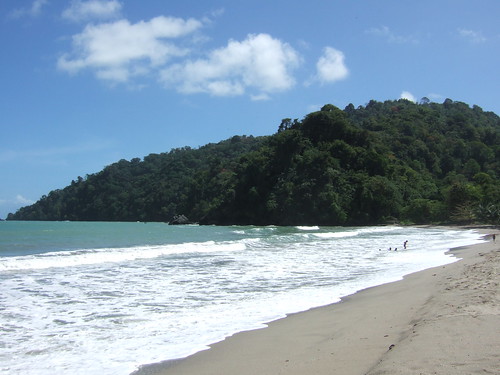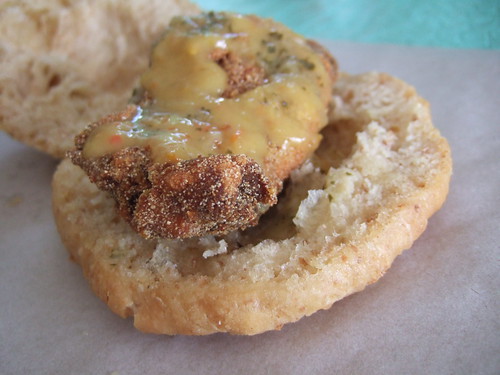A Little R&R in Grand Riviere, Trinidad
Even the Dr. was surprised. It was already 10am and I was still sleeping. Granted, the new bed I was on was so firm that I slept like a log the last eight hours or so, but I was also on Day One of our first vacation together this year. Our usual version of vacation is, well, not exactly what our friends think it should be and every time we travel, I am usually jumping on the bed waking him early in the morning so that we can go, go, go. Maybe this trip was more necessary than I initially thought because we ended up spending the first three days sleeping in, taking several naps during the day both on the beach and back in our room, and retiring to bed early after a DVD or a bottle of wine. The term R&R never really made sense to me until after our trip to Grand Riviere on the island of Trinidad.
After a five-hour deep sleep on the plane from JFK, we landed in Trinidad. Getting our luggage out of customs took a while, but as soon as we sat outside, Pierro came over to introduce himself. He owns Mt. Plaisir Estate on Grand Riviere, an almost two-hour journey from Piarco International Airport and our home for the next three nights. It was recommended to me by a fellow traveler at work after being warned that it should be kept a secret. I wanted to keep my promise, but after finding out that it already made The New York Times‘ Sophisticated Traveler list a few years ago, I thought that writing about Mt. Plaisir here won’t be revealing anything new.
Pierro asked us if we were hungry. I immediately said that I would like to try the Trinidadian “doubles”, two fried flat breads, or bara, and topped with curried chickpeas. It was almost 3pm and the stand he frequents was already closed when we drove by. As a consolation, he introduced us to an iced cold sea moss drink at V’s who also sold bake ‘n’ shark (or shark ‘n’ bake, depending on whom you ask), a deep-fried and battered shark sandwich. It’s also one of the primary reasons that attracted me to the country. The sea moss drink is what it is: sea moss sun-dried and boiled for hours to extract its juice, and then mixed with some condensed milk and sugar before blending with ice. So, with some balata, a local fruit we bought from the side of the road, we had our first Trinidadian food experience.
Pierro told us his story during our drive from the airport: he was taking photographs in Trinidad and Tobago about ten years ago and was staying in an old hunting lodge on Grand Riviere. When he found out that the place was for sale, he couldn’t resist and bought the place. (How many times have I had that feeling but was too weak to do anything about it?) He ended up changing his entire life plan to build a home for himself and for other people looking for a place to get away from the hustle and bustle of bigger cities like Port of Spain and New York City. Before he bought the estate, there were a couple of trees on the premises. Today, the cabins are all surrounded by flora and the staff maintains a garden to supply most of the restaurant’s ingredients. There are now thirteen cabins facing the Caribbean Sea with the rainforest as a dramatic backdrop. Indeed, Trinidad’s location near South America make its landscape unique from the other Caribbean countries.
I initially booked one of the rooms on the beach, but as luck would have it, we were moved to the room above the restaurant which included our own private patio. A mosquito net proved useful though still no match against the little buggers that ate the Dr.’s legs and my right arm. During the days when we actually exerted effort to walk around the small village, we searched for other food options and discovered Pinky’s, where we were sold chicken stew and rice with salad or yuca on styrofoam containers, and McHaven’s, where the rastas lazily hanged out all afternoon. Except for a curious gathering of cars with loud speakers on full blast in the parking lot behind Mt. Plaisir after sunset, all we heard were the sounds of the water crashing on the beach and the violent winds that came with torrential rains after we’ve turned off the lights at night.
March is the beginning of the leatherback turtles’ nesting season, so we also signed up for a permit to access the beach after 6pm via the visitors’ center behind Mt. Plaisir. The area is the largest nesting place for leatherbacks in the western hemisphere and we were excited to get a chance to finally see them nest in person–we’ve seen the eggs buried in Nicaragua and the babies in Mexico–but alas, no one knocked on our door when we scheduled to go. The rain probably stopped the tour guides from doing so, but they didn’t try us at dawn either. The nesting leatherbacks remain an elusive experience to us, but at least we’ve both caught up on much-needed R&R.
Related post/s:
Days 1 to 3 in Trinidad: Grand Riviere photos on Flickr
Mt. Plaisir Estate on Grand Riviere, Trinidad
In Bahia Majagual, Nicaragua, they also have nesting turtles



